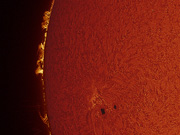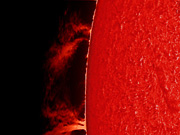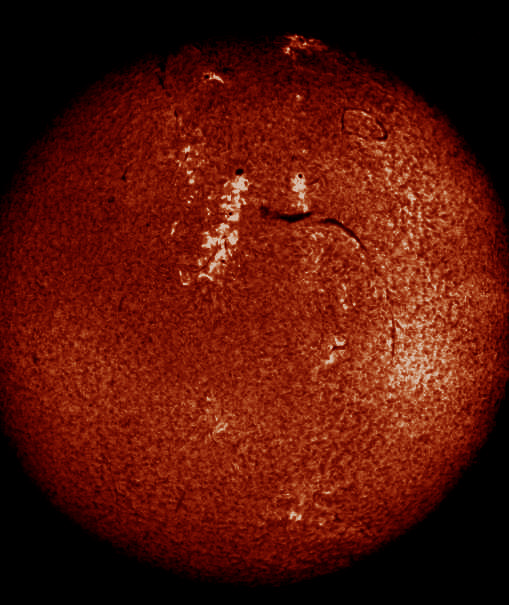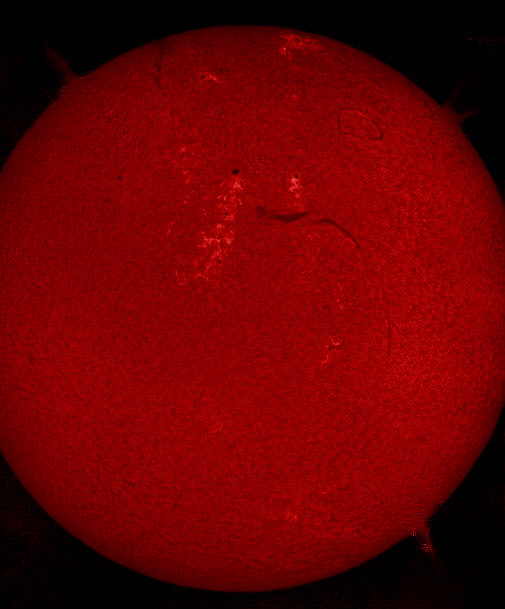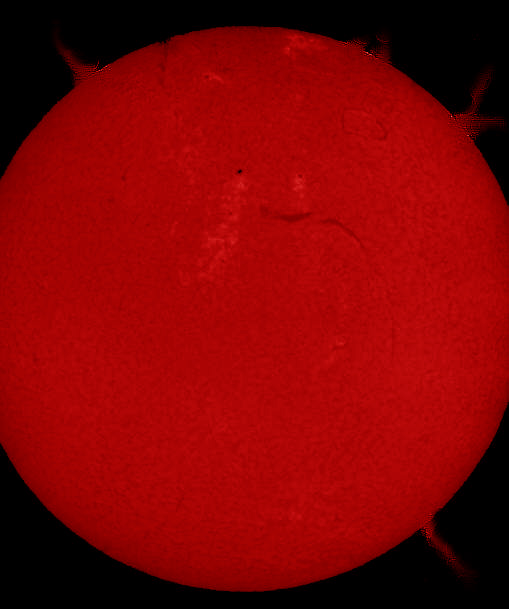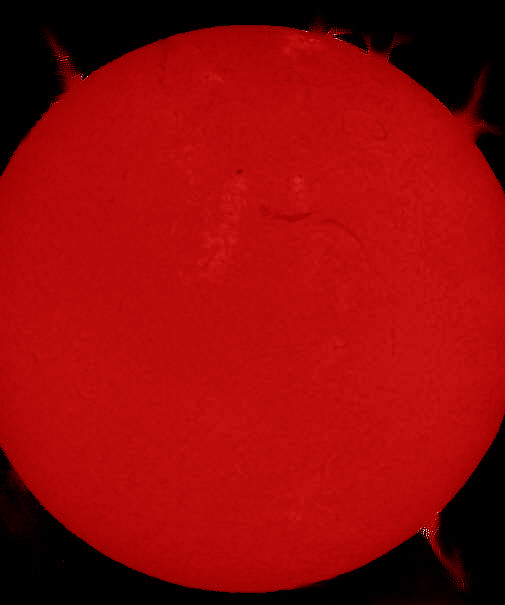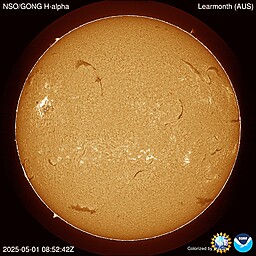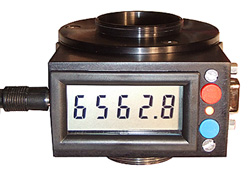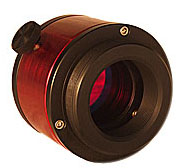
| Click for In-stock items
Delivery Times 15-20 days for: 6-8 weeks for: 6-8 months for: |
|
|
|
|
| • | |
| • | Adapters & Snouts |
|
Solar Introduction |
|
| Application | |
| Resolution and Aperture Choices |
|
| Photo Gallery | |
| Service / Repair | |
| Upgrade or Trade-in | |
| Filter Specifications | |
| DayStar Dealers | |
| Recent Trade Shows | |
| Terms of Sale | |
| Troubleshooting | |
|
|
|
|
The Sun Today |
|
 |
|
|
Filter Selection Process - a short course.Our filters are uniquely designed to transmit a narrow section of the solar spectrum while reflecting or absorbing undesirable light. The full solar spectrum is comprised of a whole rainbow of colors all To accomplish this, white light must be broken down into its constituent form to produce a rainbow of colors. Each color is measured in units called ångströms Å , (1x10-10 meters ). The human eye can discern colors within the rainbow from 3800Å in the violet to 7000Å in the crimson. Within sunlight, the continuous spectrum visible in white light is interrupted by a series of black bands called absorption lines. These lines are primarily created by cool absorbing gases located in the upper photosphere or chromosphere of the sun and in order to observe phenomena interacting with hydrogen or calcium, very precise optical filtration is required. The filtration technology must successfully isolate and transmit a prominent absorption line from the rest of the spectrum. Most commonly used is the line of Hydrogen a located at 6562.81Å in the red portion of the solar spectrum. At its half intensity point, the line is only 1.20Å wide. Providing optical filtration in this order of dimension is most demanding. Delivering high purity of filtration for solar observing involves new and innovative thin film coating technology. Currently, our evolving product line consists of the University series, ATM series and T-Scanner filtering systems. Models differ by modes of tuning and by spectral uniformity. In making a filter selection, the observer should focus on desired performance requirements in terms of spectral uniformity and filter bandpass*1.
The Quantum SE series filtering system provides wonderful imaging fidelity at a reasonable cost. Smooth spectral uniformity offered by instrument quality etalons will satisfy the needs of most observers. Nominal f/30, ( full aperture or stopped down ) optical systems delivering a focal length up to 2000 mm will find the spectral uniformity of these filters impressive. The SE series are available in a 0.8Å to 0.30Å bandpass. If the mainstay of the observing program concentrates on photography and CCD imaging, then consider the advantages of the University series. If the main desire is for visual work and taking basic images, the SE is an excellent choice. In our manufacturing of a filtering unit each is thermally tuned by a precision factory-calibrated oven to maintain proper bandpass tuning. We are constantly amazed by images delivered by these systems. We continually receive quality filtergrams taken by ATM owners that give the "big boys" a run for their money.
Generally speaking the lower, (or narrower) the filter bandpass, the higher the contrast of solar features. In fabricating the filter components, the most difficult parameter to control is spectral uniformity which is governed by the quality of the etalon*2. This sets the limit of the bandpass. Spectrally, the filter must be able to deliver a tightly controlled sub-ångström bandpass over the working aperture. In spite of the many advances in fabricating technology, experience at DayStar is finding that producing a spectrally uniform etalon seems more like an art than an exact science. We are proud to place a guarantee on our systems. All DayStar Hydrogen a filters provide clear and exciting images of prominence and surface phenomena. Observers concentrating on prominence work generally prefer a wider bandpass, (0.7Å to 0.80Å ). Those concentrating on subtle surface detail require higher contrast filter, ( 0.50Å to 0.6Å ). Those interested in chromosphere or ultra-narrow bandpass would prefer a 0.4 to 0.3Å Our most common two bandwidths are 0.5Å and 0.7Å for surface or prominence work. *1 The segment of the solar spectrum transmitted. *2 An extremely flat and parallel crystalline substrate. Return to Home Page |


